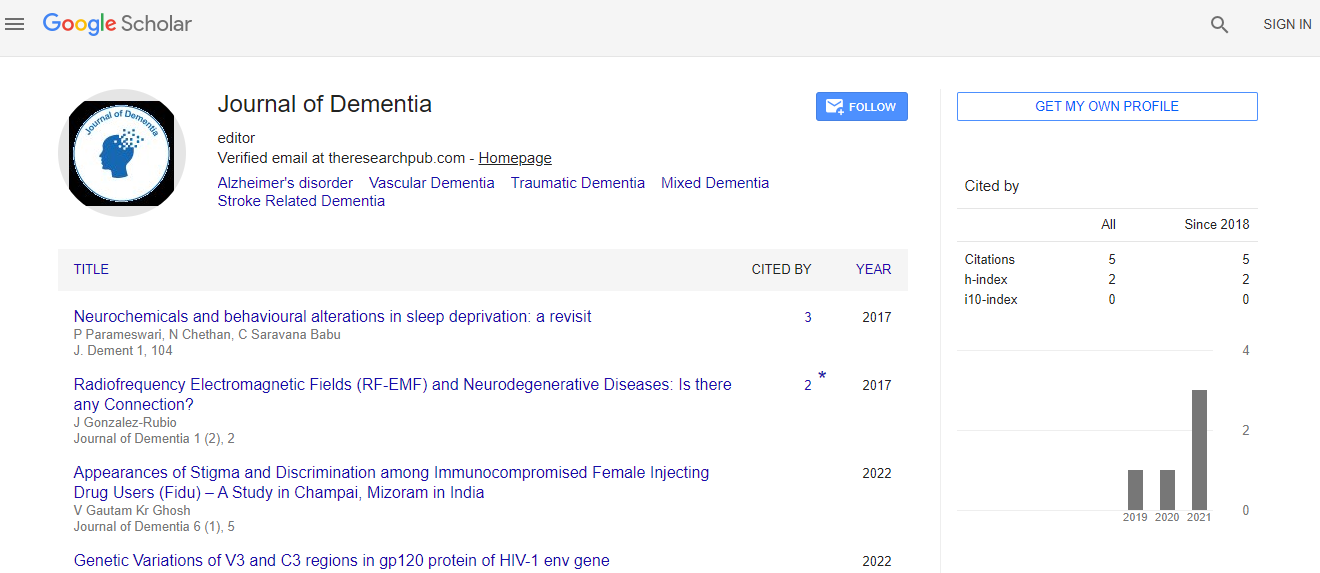DNMT1 overexpression in neurons results in dysregulation of genes associated with Alzheimerâs and Parkinsonâs Disorders
*Corresponding Author:
Copyright: © 2020 . This is an open-access article distributed under the terms of the Creative Commons Attribution License, which permits unrestricted use, distribution, and reproduction in any medium, provided the original author and source are credited.
Abstract
DNA methylation is an epigenetic modification of mammalian genomes that plays an important role in cell differentiation and normal development.
This epigenetic modification is mediated by DNA methyltransferases (DNMTs) of which DNMT1 is a maintenance methyltransferase. Abnormalities
in DNA methylation patterns as well as dysregulation of DNMTs have been reported in many disease conditions. In the context of Alzheimer’s
disease (AD), two recent studies showed increased levels of DNMT1 transcripts correlated with APOE polymorphisms and increased expression
of DR4 that promotes apoptosis and neurodegeneration. However, it is not clear whether there is dysregulation of any other AD-associated genes
due to DNMT1 overexpression. Towards this goal, we performed transcriptome sequencing of DNMT1-overexpressing neurons derived from
Dnmt1tet/tet, a transgenic mouse embryonic stem cell line (ESC). Of the 2,463 dysregulated genes associated with neurological disorders, 939
were associated with AD and Parkinson’s disease (PD). Sixty-six were common to both disorders and were studied further to understand the
relationship between dysregulation and DNA methylation levels. Reduced Representation Bisulfite Sequencing (RRBS) analysis of the Tet/Tet
neurons suggested that many of the dysregulated genes showed either no change in methylation or hypomethylation, but not hypermethylation,
suggesting absence of clear correlation between methylation changes and gene expression. Bioinformatic analysis of the 939 genes revealed
that signaling pathways regulating pluripotency, serotonergic synapse, HIF-1 and Axon guidance were affected in the Tet/Tet neurons. Importantly,
the Tet/Tet ESCs showed defective neurogenic potential, a phenotype recently reported in AD and other neurological disorders. These results
suggest that (i) DNMT1 overexpression is a potential etiological factor for neurodegenerative disorders such as AD and PD, (ii) Dysregulation of
AD- and PD-associated genes was independent of catalytic activity of DNMT1 and (3) The mechanism by which DNMT1 overexpression results
in dysregulation of AD- and PD-associated genes remains unclear.

 Spanish
Spanish  Chinese
Chinese  Russian
Russian  German
German  French
French  Japanese
Japanese  Portuguese
Portuguese  Hindi
Hindi 